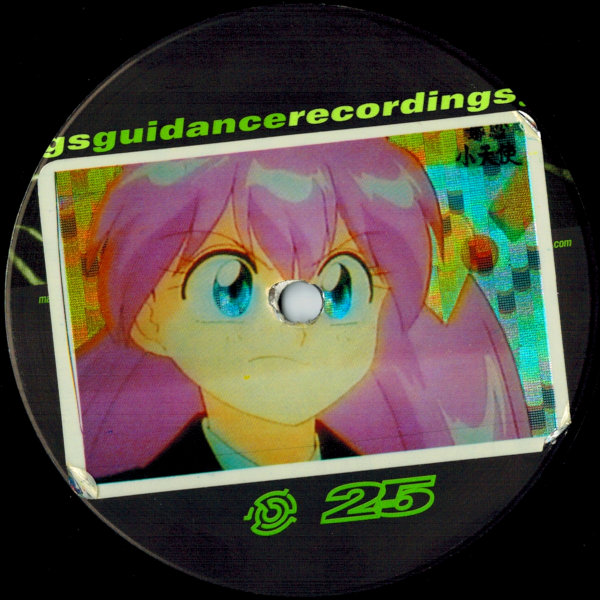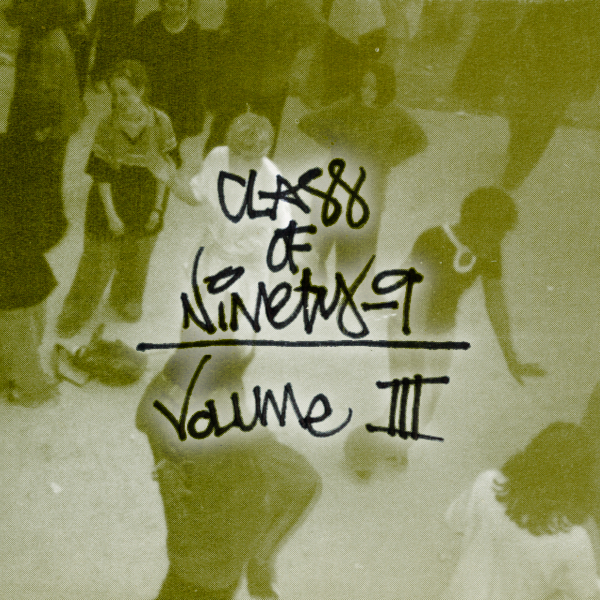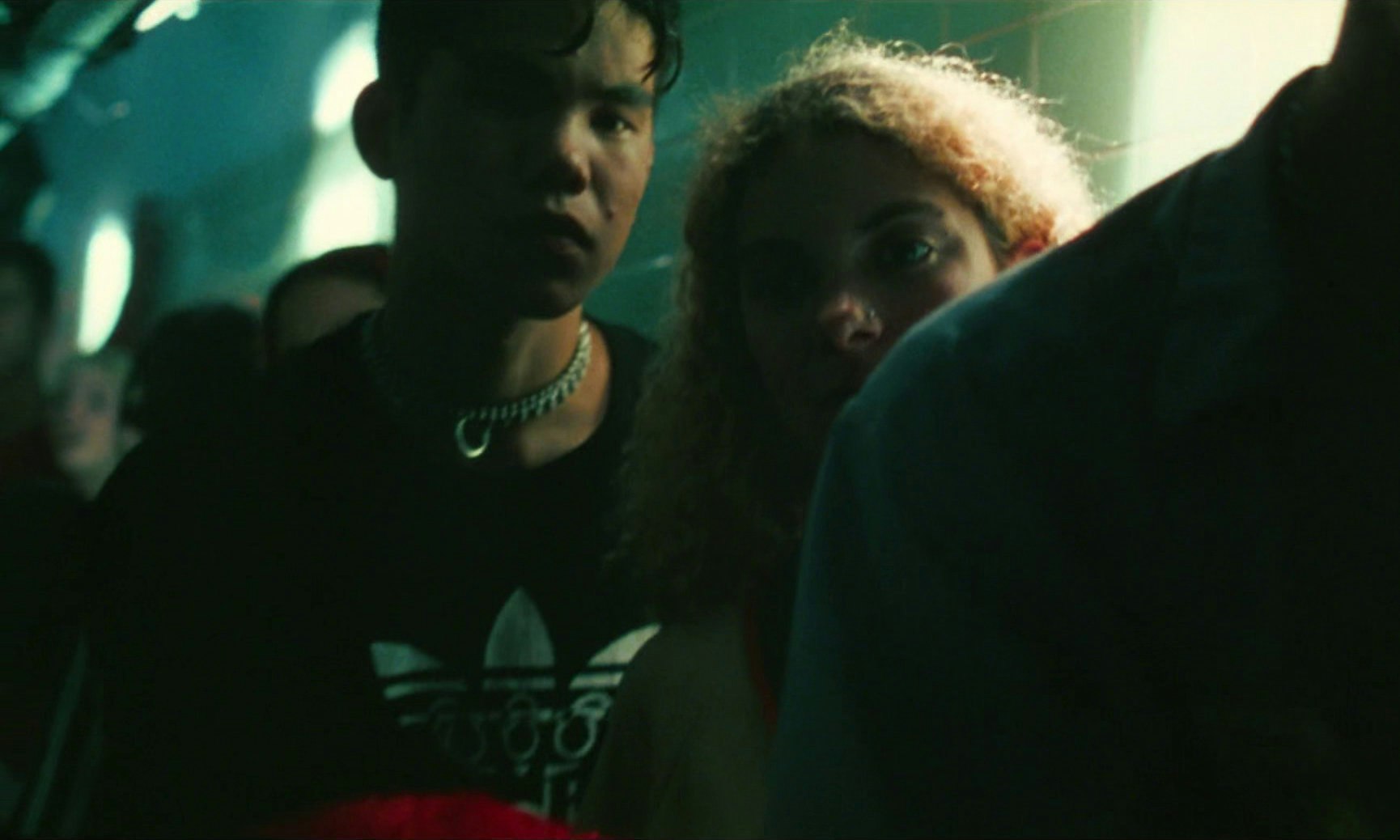Class of ’99, Vol. 3

Rave culture and Japanese Otaku culture seemed to overlap more than a little, and since Chinatown was Chicago’s hub for Japanese imports, a lot of us ravers turned up there on a regular basis. I had a girlfriend who always wanted to visit the gift shop in the Pui Tak center for her Sanrio gear (she was all about some Badtz-Maru). There was an electronics depot down there where we bought these translucent, Japanese beepers that lit up all crazy when someone paged you, and we even bought Tamagotchis together. Then one day, we broke up, and my Tamogotchi died the same day. Tragic, I know. ♡o。.( ´༎ຶ ʖ̯ ༎ຶ)・・・[×_×]
I had a close friend named Ethan who shared my interest in synthesizers, and making music. He spent most of his childhood in Hong Kong, and was fun to hit up Cermak with because he actually spoke Cantonese. I remember there was some kind of Chinese clove cigarettes that he just had to have, and could only get in that neighborhood. That, and this chrysanthemum tea that came in a kid’s juice box.
My DJ buddy Mike was obsessed with anime, and had his whole room decked out with Evangelion wall scrolls from Chinatown Square. We would get these reflective anime stickers and cover all the labels on our vinyl, so other DJs couldn’t peep our selections when we spun out at parties. We kept going back to this one little shop on Wentworth, year after year, buying up all their stickers, until all that remained were from this basketball manga called Slam Dunk that we both thought was really stupid. Recently, I went back in there and lo and behold, those same basketball stickers were still hanging there, unsold, under the cash register, 25 years later.
This month’s mixtape is entitled Three Funkyness, in honor of Chicago’s Chinatown, as Chicagoans will surely get the reference.

About the cover
Rave culture also overlapped with the Five Elements—deejaying being the most obvious connection—though graffiti and breakdancing were big in the rave scene. I used to write with my best friend, Matt. His tag was ÊTRA, and I wrote FFWD» and we mainly hit up transit stations while we waited for the bus or train.
In 1996, the city started putting undercover cops all over the CTA as part of their Graffiti Blasters program, to try and clean up the city in anticipation of that year’s Democratic National Convention, held at the United Center. In ’97, Graffiti Blasters was still in effect, and Matt and I got busted by two undercover cops, tagging up the Belmont train platform.
Chicago had also enacted a curfew for anyone under 18, and they started trying 17-year-olds as adults, which made 17 an especially bad year to be picked up off the street in the middle of the night. Matt, who was still 16, got to call his mom to pick him up, but I had to spend the whole night in big-boy jail.
I ended up getting community service, which wasn’t so bad, but enough for me to discontinue my vandalistic ways. After 25 years, my handstyle is pretty rusty—but I think this cover turned out OK. The photo is scanned from Thousand Words, Chicago’s indispensable rave zine.
Track List
Follow these links to read more about the selections:


Ruffneck — Move Your Body (MAW Your Body) (1996)
Peppermint Jam had a couple huge dance hits that played at every rave around 1996: Everybody Be Somebody, and Keep Pushin. I thought it was important to include them in this series, but I have to admit that while I liked Peppermint Jam’s sound, I never liked either of these records.
The MAW mix of “Move Your Body” is meant as kind of an alias for the other two tracks. This one is harder to mix, but easier on the ears. You can pick this one up for about 2 bucks, plus shipping.


Sylk 130 — When The Funk Hits The Fan (Mood II Swing Mix) (1996)
Sylk 130 was a pseudonym for King Britt, the Grammy-winning DJ for Digable Planets. DP’s success seemed to enjoy more enduring success with Rap-adjacent scenes than with Hip-Hop heads themselves, and I would argue their crossover appeal owes a lot to King Britt’s production.
While I can’t say I recommend the full LP of the same name, the “When the Funk Hits The Fan” single is worth picking up.


Julius Papp — Justified Music (1997)
Despite his association with the French Touch scene, Julius Papp is actually Québécois — though he frequently collaborated with his Francophone colleagues in Paris, where Yellow Records was located. This record is cheap and available.


Baby Pop — Day & Night (1996)
Who was Baby Pop? I know he lived in Chicago, and that’s about all I know. I used to know where this sample came from, but now I forget. If you know anything about Baby Pop, or the sample, let me know in the comments. You can get this one on Discogs.


NYC Live And Direct — Move Like This (1998)
This is actually a pseudonym for the excellent Davidson Ospina. I love the canned horn solo on this one. The Korg Prophecy hit the market in the mid-90s and was staple for every kind of electronic musician, but House producers liked it because it created semi-realistic instruments like horns and sax. Of course, when you start using the pitch bend wheel on your sax solo, it kind gives the game away.
This one samples Street Corner Symphony by Carrie Lucas (which is, itself, some kind of medley of 50s doo-wop songs. You can buy “Move Like This” (or Carrie Lucas) online.


Trouble Men — Our Thang (1999)
Trouble Men were a French House Duo who released one full-length album in 1999, called On TV. This track samples “We Got Our Own Thing” by C.J. & Co., available on Discogs.


Natural Rhythm — Mantra (1999)
Understated release from then-fledgling label Earthtones, who went on to release a lot more warm, organic minimal House. Buy it on Discogs.


D'Pac — Everybody (Different Shade Club Mix) (1994)
“Everybody” samples an extremely important UK House record called “People Hold On” by Coldcut, which was an anthem during England’s first Rave wave that followed 1988’s “Summer of Love”. Lisa Stansfield’s vocals from this record are among the most sampled in House music history.
I know this record from a mixtape that circulated widely in the mid-90s, Justin Long Live at Silly Rabbit. You can buy D’pac or Coldcut online.


Sound Design — Melissa's Dream (1994)
“Sound Design” was actually a Todd Terry project, who released a few 12″ records under this name in the early 90s. I’ve never identified the sample for this, so if you have a tip, let me know.
The Final EP is available to purchase on vinyl.


Rick Wade — Players Theme (1997)
Rick Wade was a staple of the Detroit House scene, but had a distinctly Chicago sound. “Players Theme” samples “Perfect Love Affair” by Constellation Orchestra, which is available on Discogs, and so is The Angry Pimp EP..


Reel Fusion Band — Keep It Coming (Lifted Fusion) (1997)
I know next to nothing about Reel Fusion Band, who apparently only ever put out this one song under this name. I know it from one of the French Sessions mixes, but never owned the vinyl until a few months ago, when I bought it on Discogs to finish this mix.
It sounds like they are, indeed, a fusion band, with some live instrumentation in there, maybe—but The vocal sample is “Armed and Extremely Dangerous” by First Choice, from the album of the same name.


Mateo & Matos — Release The Rhythm (1997)
Mateo & Matos always kept a Puerto Rican vibe to their releases. The rhythm sections were highly percussive and syncopated, with no swing, and they often sampled Puerto Rican artists — as in this case, where they sampled Newyorican band Yambú.
“Release the Rhythm” is available on the New York Rhythms LP from Glasgow Underground, as well as Yambú’s first LP.


Brian Transeau — Relativity (Carl Craig's Dub) (1993)
I first heard this cut on a VHS tape that I rented from a video shop that was downstairs from my dad’s apartment. This was 1994, and the video was X-Mix 2: Destination Planet Dream. While embarrassingly dated by today’s standards, in ’94 this seemed like the bleeding edge of audiovisual art to my 14-year-old mind, and I found myself transfixed, watching this from start to finish.
Visuals were an important element of any rave. Lasers and strobes were a must, and videos like this were projected onto walls and behind the DJ booth. I can’t tell you how many times I saw Beyond The Mind’s Eye over the years.
Brian Transeau went on to a highly successful career as BT, and Laurent Garnier has enjoyed international success as a DJ. The X-Mix series was eventually released as DVD, which I recommend you pick up as it’s a perfect time capsule of the mid-90s Rave aesthetic.


DJ Sneak — Show Me The Way (1995)
Chicago’s own DJ Sneak was a regular at Chicago raves — so much so that lots of ravers seemed to know him personally. He was a DJ’s producer, and by that I mean that his records were often basic, repetitive, and straightforward, almost like he was cutting dubplates for his own sets and then releasing them afterward. Tracks were often just a 909 and a disco loop, without even a bassline other than what was on the original sample. I swear I had Sneak records that weren’t even in stereo!
I’m not saying this to knock DJ Sneak. I’m just saying that he had a very no-bullshit approach to production that put the DJ first. Every DJ had his records because they were so easy to transition in and out of.
“Show Me The Way” samples The Jacksons, the later disco incarnation of the Jackson 5. You can pick up the Polyester EP online, but the whole series is worth having. You can also get the Jacksons song on their first LP.


The Black Science Orchestra — Philadelphia (1994)
This is the A side from the previously-spun Altered States E.P. I couldn’t tell you about the samples for this one, other than the drums which sample Montana Sextet’s “Heavy Vibes”. — an awesome disco cut worth having on vinyl.


First Choice — The Player (Mousse T Vocal Mix) (1997)
First Choice gets the Peppermint Jam treatment. This mix doesn’t stray too far from the 70s original, and it’s worth buying for the cover art alone. The Mousse T mix is also purchasable online.


Sandy Rivera — Expansions '97 (1997)
This is my third favorite House record of all time. The extended Rhodes electric keyboard solo is just exceptional, virtuoso-tier. Then the piano solo comes after that which is also great, but in a totally different style.
The flipside of the label says ‘Additional keyboards by Dan’, so I’m guessing Sandy Rivera played the Rhodes and ‘Dan’ played the piano — but I’m not certain. “Expansions ’97” is a loose cover of “Expansions” by Lonnie Liston Smith.
“Expansions ’97” is available on Discogs, and while you’re there I recommend you pick up LLS’ ‘Best of’ compilation.
